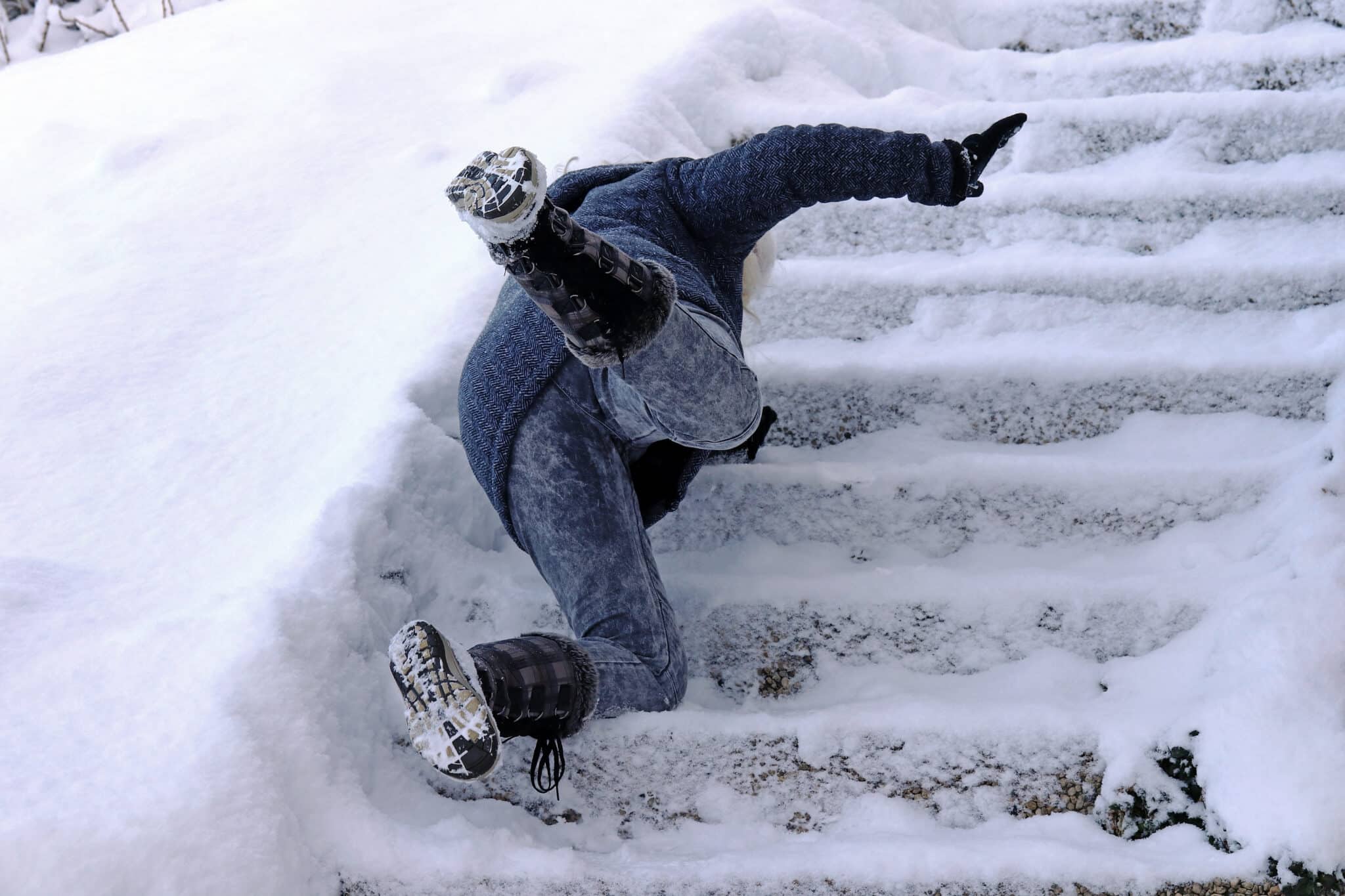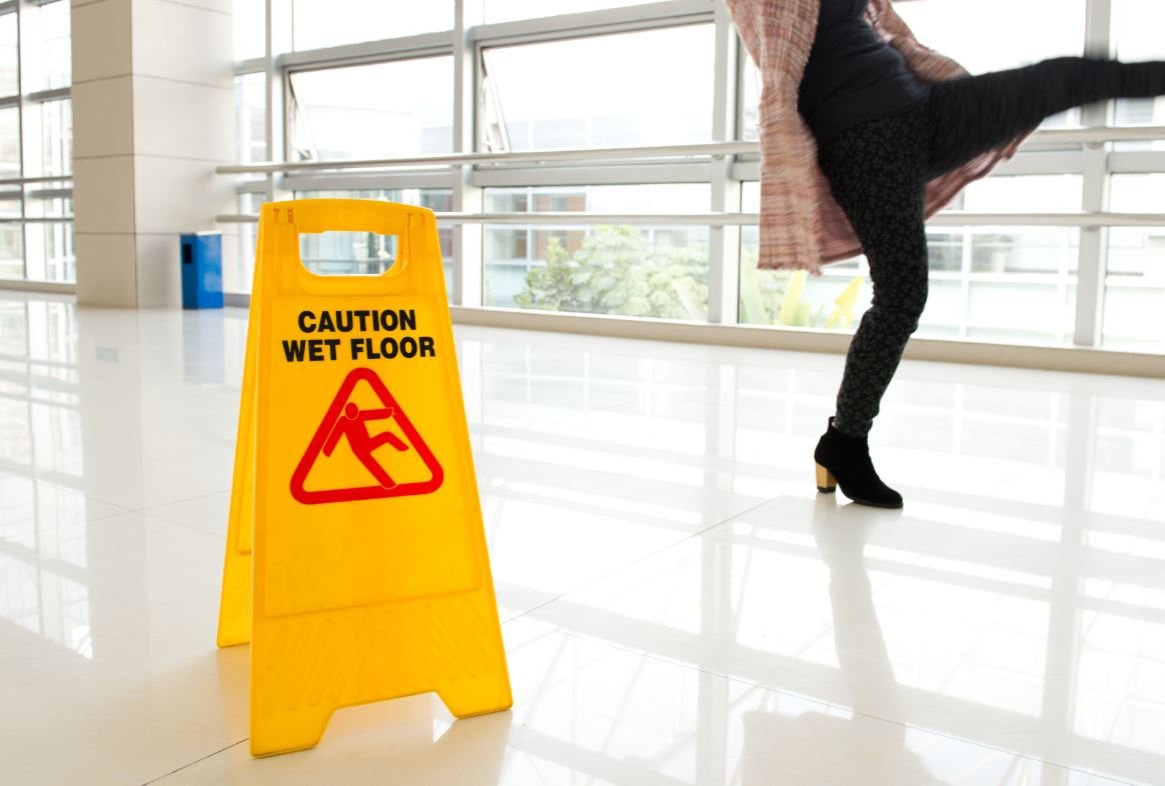Slip and fall accidents not only cause serious injuries and emotional distress but can also lead to substantial financial burdens on the victims. As a property owner, the responsibility of providing a safe environment to visitors and guests cannot be overlooked. But what exactly does this responsibility entail? And how can property owners minimize the risks of such accidents on their premises? This blog post will delve into the role that property owners play in preventing slip and fall accidents, including their legal obligations, common causes of these accidents, and practical steps that can be taken to reduce the likelihood of injuries. So, if you own a business, residential property, or public venue, read on to learn how you can ensure the safety of your guests and protect yourself from potential liability.
-min[1].jpg)
I. Introduction to slip and fall accidents and the property owner’s responsibility
A. Definition of slip and fall accidents
A slip and fall accident is a common type of personal injury case where an individual slips or trips and suffers an injury on someone else’s property. These incidents generally fall under the broader category of premises liability claims, which hold property owners legally responsible for any accidents that occur due to unsafe conditions on their premises. According to FindLaw, some examples of hazardous conditions that can cause a slip and fall include torn carpeting, changes in flooring, poor lighting, narrow stairs, or wet floors. It is important to note that the injured individual must have sustained some form of harm, even if minor, to pursue legal action in such cases. [1][2]
B. Property owner’s responsibility in preventing slip and fall accidents
Property owners have a significant responsibility in preventing slip and fall accidents on their premises. They need to ensure that their property is well-maintained and adheres to city and state safety guidelines. When property owners fail to do so, they can be held liable for the victim’s injuries in case of a slip and fall accident. Some key responsibilities include:
– Regularly inspecting the premises for potential hazards
– Addressing unsafe surface conditions, such as cracks or worn surfaces
– Proper management of floor transitions
– Timely removal of water accumulation, ice, and snow
– Providing warning signs for potential hazards
– Ensuring proper illumination in all areas
– Removing clutter and obstacles in walkways
– Covering cords and keeping drawers and cabinet doors closed
By diligently fulfilling these responsibilities, property owners can significantly reduce the likelihood of slip and fall accidents on their premises. [3][4]
II. Common causes of slip and fall accidents
A. Unsafe surface conditions
Unsafe surface conditions significantly contribute to slip and fall accidents, making it a property owner’s responsibility to address them diligently. According to the Shiner Law Group, common unsafe surface conditions include uneven flooring, water accumulation, potholes, exposed wiring and cabling, and the presence of rugs or other foreign objects. By regularly inspecting and maintaining the property, property owners can ensure that such hazards do not exist or provide proper warnings if they do. In doing so, they can minimize the risk of personal injury and potential financial liabilities associated with slip and fall accidents. [5][6]
B. Floor transitions
Floor transitions, such as moving from carpet to wood or vice versa, are common causes of slip and fall accidents in properties. Property owners must ensure that these transitions are seamless and safe in order to prevent potential accidents. Here are some tips for managing floor transitions:
– Use appropriate transition strips to bridge the gap between different floor materials, ensuring a secure and level surface.
– Apply anti-slip tapes or slip-resistant coatings to smooth floor surfaces, reducing the risk of slipping.
– Regularly inspect floor transitions for damage or wear, repairing or replacing materials as needed to maintain safety standards.
By taking these precautions, property owners can significantly reduce the likelihood of slip and fall accidents caused by floor transitions and protect themselves from potential liability. [7][8]
C. Occupational property negligence
C. Occupational Property Negligence
Occupational property negligence is a significant factor in many slip and fall accidents. It can involve property owners or managers failing to address hazards present in various work environments, such as construction sites, housekeeping areas, or cooking spaces. These risks can be detrimental to the employees and visitors alike, leading to potential injuries and legal liabilities for the property owners.
As mentioned by Shiner Law Group, examples of occupational property negligence include:
– Poorly lit areas where hazards may be difficult to spot
– Inadequate maintenance of elevators, escalators, or stairways
– Insufficient efforts to keep flooring, walkways, parking lots, or roads dry and free of slick surfaces
To avoid such negligence, property owners must stay vigilant in identifying and addressing any occupational hazards and ensure safety precautions are in place within their premises. [9][10]

III. Preventative measures for slip and fall accidents
A. Removing water accumulation or ice and snow
Water accumulation, ice, and snow can create dangerous conditions for pedestrians on a property owner’s premises. To prevent slip and fall accidents, property owners must take proactive steps in addressing these hazards:
– Regular inspections: According to Rosenberg & Gluck L.L.P., frequent checks on walkways and floors for snow and ice perils are crucial in preventing accidents.
– Prompt removal: Clearing snow and ice as much as possible on sidewalks, parking lots, and other high-traffic areas minimizes hazards.
– Ice management: Applying salt or other ice-melting solutions can help deter ice formation and refreezing during temperature fluctuations.
– Interior solutions: Absorbent rugs and mats near entrances can soak up melted snow tracked inside, reducing the risk of indoor slip and fall accidents.
Taking these precautionary measures contributes to a safer environment for all visitors to the property. [11][12]
B. Providing warning signs
B. Providing Warning Signs
According to Derek L. Hall PC, premises liability injuries are some of the most common accidents in the United States, and many of them result from negligence on the part of property owners, managers, or occupiers. To help prevent slip and fall accidents, property owners should provide warning signs in areas where potential hazards could harm visitors or guests. When used appropriately, warning signs act as an essential safety measure to make people aware of potential risks before they encounter them.
• Proper placement: Warning signs should be positioned where visitors are most likely to see them before encountering the dangerous condition.
• Visibility: Ensure signs are not obstructed by plants, objects, or dim lighting.
• Readability: Signs should have large and dark enough lettering for easy reading.
• Language: Choose a language that is widely understood by those who will come in contact with the sign.
However, warning signs alone do not exempt property owners from liability if negligence is proven to be the cause of an accident. It’s essential for property owners to take additional safety measures to prevent slip and fall accidents on their premises. [13][14]
C. Proper illumination
Proper illumination is a crucial aspect of preventing slip and fall accidents on any property. As mentioned by Shiner Law Group, installing lights that provide adequate illumination can significantly reduce the risk of environmental factors such as clutter, debris, and exposed cables causing personal injuries. By ensuring sufficient lighting in all areas of the property, property owners can:
– Create a safer environment for visitors, employees, and residents
– Reduce the likelihood of accidents caused by poor visibility
– Minimize the risk of financial liability due to negligence related to illumination
In conclusion, maintaining proper illumination in all areas of a property is a vital responsibility of property owners in preventing slip and fall accidents, ensuring the safety of all individuals, and avoiding potential legal consequences. [15][16]
D. Removing clutter and obstacles
One crucial step in preventing slip and fall accidents is removing clutter and obstacles from the property. A well-maintained environment reduces the risk of accidents and minimizes the property owner’s liability. According to the experienced personal injury attorneys at Kwartler Manus, property owners should take the following actions to create a safe space for guests and invitees:
– Regularly clear walking paths and passageways of any debris, clutter, or foreign objects.
– Ensure that any cords running across open areas are well-covered with tape or cord covers to alert passersby of their presence.
By diligently maintaining a clutter-free and obstacle-free environment, property owners can significantly decrease the chances of slip and fall injuries and protect themselves from potential legal implications. [17][18]
E. Covering cords and closing drawers and cabinet doors
E. Covering cords and closing drawers and cabinet doors
One of the essential ways to prevent slip and fall accidents is by ensuring that cords and other potential obstacles are properly managed. Property owners must take responsibility for reducing risks by covering cords and securely fastening them to the floor with tape or cord covers. This simple step alerts passersby of their presence and minimizes the chances of tripping. Additionally, keeping drawers and cabinet doors closed can significantly decrease the risk of accidents. Not only does this practice create a more organized space, but it also removes potential hazards for anyone walking nearby. Remember, it’s vital to prioritize safety by taking these proactive measures to ensure a safe environment for everyone. [19][20]














